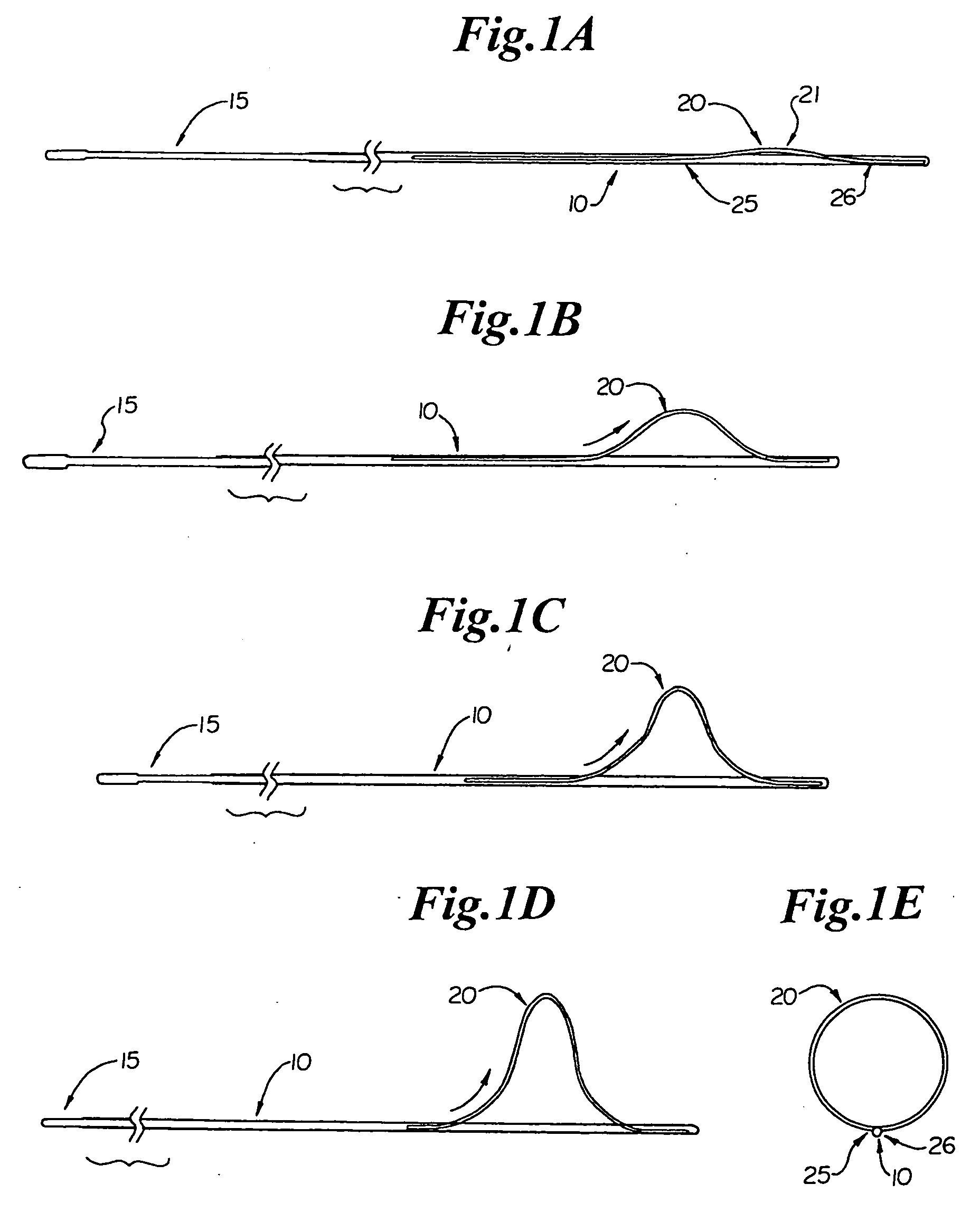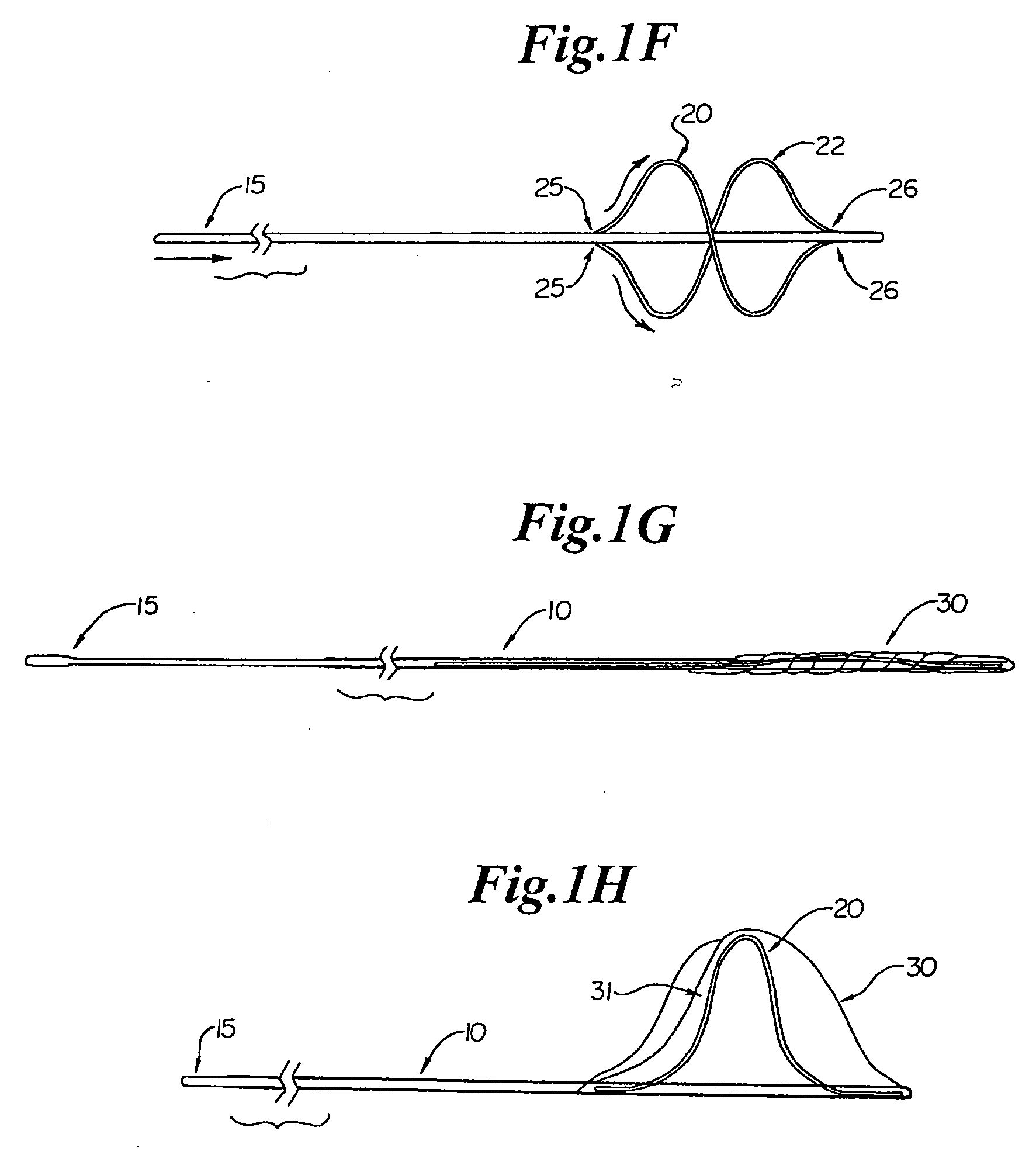Endovascular guidewire filter and methods of use
a technology of endovascular guidewire and filter, which is applied in the field of endovascular guidewire filter and method of use, can solve the problems of occlusion of narrower vessels downstream, ischemia or infarct of the organ which the vessel supplies, and difficulty in insertion of the filter through a complex vascular lesion, so as to prevent accidental release of emboli, minimize neurologic, cognitive and cardiac complications, and tight stowage of the filter
- Summary
- Abstract
- Description
- Claims
- Application Information
AI Technical Summary
Benefits of technology
Problems solved by technology
Method used
Image
Examples
Embodiment Construction
[0063] A filter device for temporary placement in a vessel, either an artery or vein, is provided as depicted in FIGS. 1A through 1H. FIG. 1A shows elongate tubular member 10 having proximal ports 25 and distal ports 26 located at a distal region. Proximal ports 25 are located circumferentially approximately 180° from each other. Distal ports 25 are also located circumferentially approximately 180° from each other. The circumferential positioning, however, may vary between 90° and 270°, more preferably 100° to 260°, more preferably 110° to 250°, more preferably 120° to 240°, more preferably 130° to 230°, more preferably 140° to 220°, more preferably 150° to 210°, more preferably 160° to 200°, more preferably 170° to 190°, most preferably approximately 180°.
[0064] A first flexible member 20 passes through port 25 at a proximal end, crosses 180° over elongate member 10 at point 21, and either is coupled externally at the distal end of elongate member 10 (not shown), or passes through...
PUM
 Login to View More
Login to View More Abstract
Description
Claims
Application Information
 Login to View More
Login to View More - R&D
- Intellectual Property
- Life Sciences
- Materials
- Tech Scout
- Unparalleled Data Quality
- Higher Quality Content
- 60% Fewer Hallucinations
Browse by: Latest US Patents, China's latest patents, Technical Efficacy Thesaurus, Application Domain, Technology Topic, Popular Technical Reports.
© 2025 PatSnap. All rights reserved.Legal|Privacy policy|Modern Slavery Act Transparency Statement|Sitemap|About US| Contact US: help@patsnap.com



